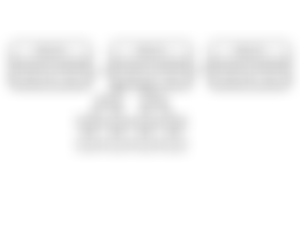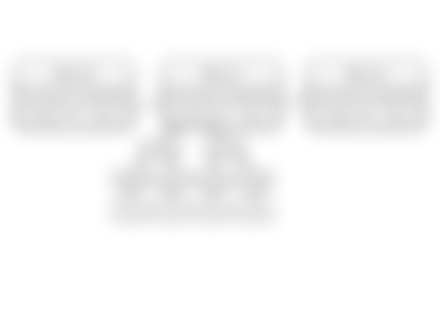Many people ask me: how does Bitcoin Cash work? I am a layman and I don't understand it. Can you explain it to me? For many lay people, only the price is important, but there are also many who want to know how Bitcoin Cash works. That's why I decided to explain it in the simplest possible terms.
Bitcoin Cash network is built on blockchain technology. It is an ingenious technology that is basically easy to explain, even though the cryptographic procedures underlying the technology are very complex. However, I will not go into the details of cryptography in my explanation, nor is it essential to know cryptography to understand how the Bitcoin Cash system works.
So how does Bitcoin Cash work? Bitcoin Cash is a list of transactions that are grouped into blocks and stored on several (over a thousand) computers (called nodes). The blocks are connected to each other and form a chain, the so-called blockchain. Because the nodes constantly communicate with each other (each node is connected to about 20 other nodes) and exchange data, the blockchain is identical on all nodes. These nodes form the Bitcoin Cash network. I have described how to run such a node here.

You can see a list of Bitcoin Cash Nodes here.
When you install a wallet on your smartphone, your wallet connects to one of these nodes and checks whether there are transactions for your address in the blockchain. If no one has sent anything to your address yet, the wallet finds nothing and shows a balance of 0.
When I start my wallet, my wallet connects also to a node. It's probably a different node than the one your wallet is connected to, but it doesn't matter because all nodes have the same transactions stored. My wallet also checks the blockchain and finds that someone has transferred 2 BCH from their Bitcoin Cash address to my Bitcoin Cash address. So the wallet has found an incoming transaction worth 2 BCH for my address and shows me a balance of 2 BCH. Because the transaction is not stored in my wallet but in the blockchain, I can see my balance in any wallet where I import my seed. I have described this and how a Bitcoin Cash wallet works here.
When I send you 1 BCH, my wallet creates a transaction and sends it to the node my wallet is connected to. Only my wallet can create the transactions, because for the creation of the transaction my private key is necessary which is only stored in my wallet. The private key can always be recreated if you know the seed and derivation path, so it is very, very important that you know your seed in derivation path and keep it in a secret place. The node to which my wallet is connected checks if the transaction is correct, if I really have 1 BCH left to spend and sends the transaction to all the nodes it is connected to. The other nodes do the same and in seconds the whole network knows that I sent you 1 BCH. Since your wallet is connected to one of the nodes in the network, you see your BCH as soon as the node sends the information to your wallet. Since the network is very fast, your wallet gets the information in seconds and you see 1 BCH in your wallet.
However, this transaction is not yet confirmed, which means that it is not yet in a block. It is still waiting in the special waiting room called mempool to be included in a block. The waiting room, the mempool is also located on all nodes in the Bitcoin Cash network. The transactions from the mempool are grouped into blocks by special nodes (so-called mining nodes). And this is where something very special comes into play. In order for the transactions to be included in a block and in the blockchain, a special number called nonce must be calculated for the block. Calculating the number is very difficult and costs a lot of energy and therefore money. All mining nodes try to calculate the nonce at the same time.
If a node is the first to find the nonce, it assigns the block a new number that is 1 higher than the last block, adds transactions from the mempool, a timestamp (time when the nonce was found) and very importantly, the cryptographic hash from the previous block. The cryptographic hash connects the new block to the blockchain. The mining node distributes the block to all the nodes it is connected to, which check whether the new block was created correctly and distribute it further. All the other nodes do the same. In this way, all nodes have added a new block to the blockchain in seconds. The cryptographic hash is very important as a connection between the blocks. If someone were to change a transaction in a block, the cryptographic hash of the block would change and the block would be considered invalid by all other nodes.

The transactions are now in the block, so they have been confirmed and the game starts all over again. The mining nodes start calculating a new nonce. A nonce is found on average every 10 minutes, which is why the blocks are also created approximately every 10 minutes. If the nonce is calculated more frequently, the Bitcoin Cash node software increases the difficulty, if the nonce is calculated too rarely, the software decreases the difficulty of the calculation. This ensures that the creation of the blocks takes place on a reasonably regular basis.
The inclusion of a transaction in a block is called a confirmation. Although the algorithm is supposed to ensure a regular confirmation, it can happen that the confirmation takes much longer than 10 minutes. This doesn't matter for a wallet like Bitcoin.com, because no confirmation is required for the wallet, but it matters a lot for the exchanges. For example, CoinFLEX only requires one confirmation, but coins.ph requires many more confirmations (I think 8), so it takes a long time for coins.ph to show the BCH sent.
To make the work that was necessary to calculate the nonce worthwhile, the miner node gets a reward. He is allowed to create 6.5 new BCH and keep them for himself (each node also has a Bitcoin Cash address, he creates so-called coinbase transaction by sending the 6.5 BCH to his own address). In addition, he gets to keep all the transaction fees of the transactions he has included in a block.
You can find all transactions and all blocks in the Block explorer. Block 0 (genesis block) created by Satoshi Nakamoto on January 3, 2009 with the Text "Chancellor on brink of second bailout for banks" can also be found there.
The more than thousand nodes in the Bitcoin Cash network, which are distributed all over the world, monitor whether the transactions and blocks are correct and the mining nodes, which are also distributed all over the world, create the blocks and connect them to the blockchain. This is how they keep the entire Bitcoin Cash system running. The fact that the network is completely decentralized and no one has control over the nodes makes the network very secure. No one can manipulate the transactions and your funds are safe in the blockchain. No one can shut down Bitcoin Cash network, no government, no super rich. Bitcoin Cash can only cease to exist if the internet collapses, but then the whole world probably collapses.

...and you will also help the author collect more tips.


Thanks for recommending the articles. This is the first one. Lemme jump over to the next. I'm in the learning phase and these articles are helpful.